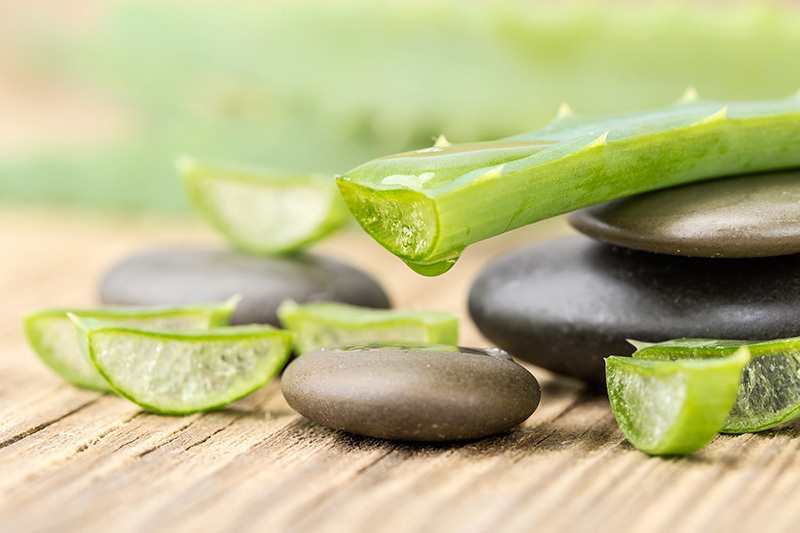Peony Petals: A Journey Through Color and Meaning
Posted on 22/08/2025
Peony Petals: A Journey Through Color and Meaning
The enchanting peony has long occupied a place in the hearts of flower lovers and cultural historians alike. With its voluptuous petals, sumptuous palette, and rich symbolism, the peony has inspired art, literature, and tradition for centuries. Join us on a fascinating voyage to discover the world of peony petals, exploring their unique colors, meanings, and how they continue to grace our lives today.

An Introduction to Peonies and Their Petals
Native to Asia, Europe, and Western North America, peonies belong to the genus Paeonia, which encompasses over 30 species and countless cultivars. Revered for their exquisite blooms, peonies are famous for their layers of delicate petals that unfurl in early summer, transforming gardens into lush, colorful tapestries.
The Structure of Peony Blossoms
Peonies are divided into two main types: herbaceous peonies and tree peonies. The petals of each variety are a marvel in themselves, sometimes bowl-shaped, sometimes ruffled like silk, but always stunning. The typical peony flower features:
- Outer guards - A ring of larger, showy petals at the flower's edge
- Interior petals - Layers of smaller, intricate petals, sometimes densely packed
- Central cluster - Stamens and carpels, surrounded by frill-like petal structures in some types
It's this luxurious abundance that gives peony petals their celebrated reputation for beauty and opulence.
The Mesmerizing Spectrum of Peony Petal Colors
Peony petals are celebrated for their magnificent range of colors, often blending subtle gradients and vibrant hues that mesmerize the eye. Let's journey through the dazzling palette these blooms offer:
Classic Whites and Ivories
White and ivory peony flowers are cherished for their pristine elegance. Symbolizing purity, innocence, and new beginnings, these classic shades are popular in weddings and christenings. Notable varieties include:
- 'Festiva Maxima' - Boasting snowy white petals flecked with hints of crimson
- 'Duchesse de Nemours' - Creamy petals with a light lemon fragrance
Blush and Pink Peonies
The most iconic peony color is arguably pink. From soft blush tones to hot magentas, pink peony petals convey romanticism and femininity. Associated with prosperity and compassion, their popularity never wanes.
- 'Sarah Bernhardt' - Lavish ruffled petals in pastel pinks
- 'Bowl of Beauty' - Shell pink outer petals encasing creamy yellow centers
Red and Crimson Peony Petals
Rich crimson and red peonies are striking showstoppers in any garden. Associated with love, honor, luck, and wealth--especially in Chinese culture--these fiery hues are essential in spring celebrations.
- 'Karl Rosenfield' - Deep raspberry-red blooms
- 'Red Charm' - Velvety, bomb-shaped cardinal red petals
Coral and Orange Peonies
Coral and orange peonies bring a modern vibrancy to the traditional peony palette. These colors radiate warmth, happiness, and energy, lighting up bouquets and borders.
- 'Coral Charm' - Satiny coral petals that fade to peachy tones
- 'Coral Sunset' - Intense orange-coral blooms that transition to soft cream
Lavender, Mauve, and Purple Tones
Though less common, peonies also occur in dreamy shades of lavender, mauve, and purple. These unique hues conjure sophistication, nobility, and, at times, a gentle nostalgia.
- 'Morning Lilac' - Deep lilac petals with magenta center highlights
- 'Shimanishiki' - Rare, unique Japanese peony with bold streaks of purple
Yellow and Creamy Petals
Yellow peonies symbolize hope, luck, and cheerfulness. While rare in European herbaceous varieties, tree peonies shine in lemon, gold, and buttery hues.
- 'Bartzella' - Large, sunny yellow petals and a pleasant fragrance
- 'High Noon' - Lemon-yellow tree peony with striking presence
With such an exquisite color spectrum, it's no surprise peony petals have become an iconic motif for joy, luxury, and emotional expression.
Cultural Significance and Symbolism of Peony Petals
Peonies in Asian Tradition
Across East Asia, peonies are deeply embedded in myth, folklore, and art. In Chinese culture, the peony is known as the "King of Flowers" (??, mu dan), symbolizing honor, wealth, and feminine beauty. Its petals feature in:
- Imperial motifs on robes, porcelain, and architecture
- Traditional medicine, believed to embody healing and longevity
- Literature and poetry, representing virtue and love
Japanese peonies are equally beloved, representing bravery and good fortune, and are often found in classic woodblock prints (ukiyo-e).
Peonies in Western Culture
In the West, peonies have long symbolized romance, prosperity, and bashfulness. They are a featured flower for the 12th wedding anniversary, conveying happy marriage and a wish for a joyful future. Peonies frequently adorn bridal bouquets and feature in Victorian flower language (floriography) as tokens of goodwill or regret for hastily spoken words.
Spiritual and Artistic Meanings
Peony petals are often associated with metaphysical qualities, such as:
- Abundance and prosperity
- Healing and protection in folk remedies
- Rebirth and inner transformation (as seen in spring blooms detaching from winter's grasp)
Artists draw inspiration from peony blooms, using their layered petals to symbolize complexity, depth, and the elegance of nature's cycles.
Peony Petals in Art, Literature, and Design
Peonies in Fine Art
Since antiquity, the lush shape and vibrant color of peony petals have appeared in paintings, tapestries, and ceramics. Impressionist masters like Monet and Renoir often painted peonies to capture their fleeting, sunlit beauty. In China and Japan, the peony motif evokes a sense of grace and celebration in embroidery and scrolls.
Peonies in Literature and Poetry
For poets and writers, peony petals are metaphors for layers of love, secrets, and the impermanence of life's finest moments. Peonies appear in the works of Chinese poet Bai Juyi and even in contemporary English literature as emblems of romance and longing.
Modern Uses: Fashion, Wedding Decor, and Perfumery
- Fashion: Peony prints are perennial favorites in textile design, most often seen in spring wardrobes and accessories.
- Weddings: With their assertive beauty and layered symbolism, peonies are beloved as bouquet flowers and table centerpieces, representing partnership and prosperity.
- Fragrance: The intoxicating, subtly sweet fragrance of peony petals is recreated in luxury perfumes and home scents, offering a touch of garden magic indoors.
Growing, Harvesting, and Caring for Peony Petals
Planting and Cultivating Peonies
Growing your own peonies can be a deeply rewarding journey--their petals eager to reward patience with annual bursts of color and scent. Here's how to nurture their beauty:
- Choose a sunny spot: Most peonies require at least 6 hours of direct sunlight daily.
- Well-drained soil: Peonies dislike standing water and thrive in slightly alkaline soils.
- Planting depth: Set herbaceous peony tubers so the "eyes" are just 1-2 inches below the surface to encourage blooming.
- Space plants well: Allow airflow to prevent fungal diseases on lush petals and leaves.
Peony Petal Care and Longevity
To enjoy peony blooms and petals indoors, cut stems in the early morning when blooms are still in tight bud, and change vase water daily. Remove any leaves below the waterline to prevent rot. Peony petals retain freshness longer when placed in cool conditions out of direct sunlight.
Preserving Peony Petals
- Pressing: Flatten petals between parchment and heavy books for use in arts and crafts.
- Drying: Hang blooms upside down in a dark, breezy place for dried bouquets or potpourri.
- Freezing: Edible peony petals (untreated by chemicals) can be frozen into ice cubes for dramatic effect in drinks and desserts.
Peony Petals in Culinary and Medicinal Use
Culinary Uses of Peony Petals
Surprisingly, peony petals are edible! Their delicate flavor--somewhere between rose and citrus--makes them a beautiful addition to:
- Salads and fruit dishes
- Cakes and pastry decorations
- Homemade syrups, jams, and liqueurs
Note: Always verify the variety and ensure they are grown free of pesticides before consumption.
Medicinal Properties of Peony
In traditional Chinese medicine, dried peony roots and petals have been used to soothe inflammation, improve circulation, and balance hormones. While Western science continues to explore these claims, the symbolic healing properties of peonies remain potent in folklore and home remedies.
Fun Facts and Lesser-Known Wonders of Peony Petals
- Longest-lived flower: A well-sited herbaceous peony can bloom beautifully for over 50 years without replanting!
- Ant partners: Ants suckle at the sugary secretions on peony buds, helping them open smoothly--nature's clever teamwork.
- Record breaker: The world's largest peony flower belongs to the tree peony species, with a single bloom measuring up to 10 inches across.

Peony Petals: Capturing the Essence of Beauty and Meaning
From gardens bursting with ruffled pink petals to wedding bouquets radiating love and hope, the peony remains one of nature's greatest masterpieces. Each petal is a brushstroke in a vibrant canvas, imbued with centuries of symbolic meaning and cultural reverence.
Next time you're captivated by the silky layers of a peony bloom, take a moment to appreciate not just its beauty, but its timeless journey--through myth, art, healing, celebration, and into your own story.
Frequently Asked Questions about Peony Petals
- What do different colored peony petals symbolize?
White peonies signify purity; pink petals denote romance and prosperity; red peonies represent honor and passion; yellow peonies symbolize hope and joy. - Are peony petals edible?
Yes, many types of peony petals are edible and can be used in culinary creations. Ensure no pesticides or chemicals have been used before consuming. - How can I make peony flowers last longer in a vase?
Cut the stems in bud, remove foliage below the waterline, use fresh water daily, and keep out of direct sunlight.
Conclusion: The Endless Allure of Peony Petals
Peonies stand at the crossroads of nature's artistry and human imagination, their petals whispering tales of beauty, transformation, and meaning. Whether grown for show, cherished at heartfelt occasions, or enjoyed in art and cuisine, peony petals promise a sensory delight that transcends generations. May your own journey with peonies continue to unfold, petal by magnificent petal.
Latest Posts
Peony Petals: A Journey Through Color and Meaning
Elevate Birthdays with the Best Floral Gifts
Red Roses: The Quintessential Valentine's Day Gesture





